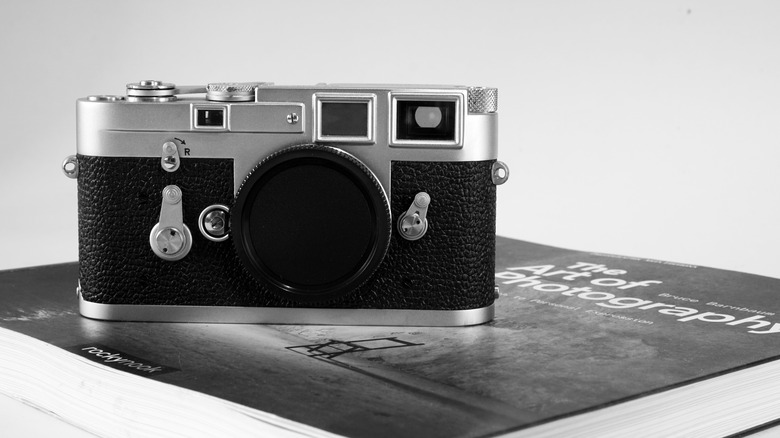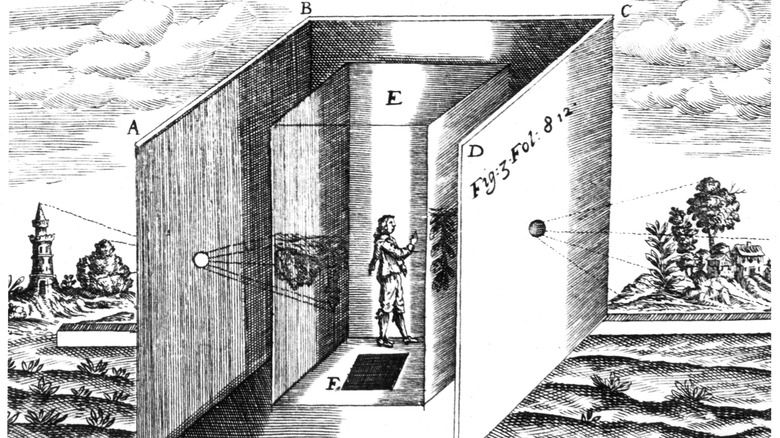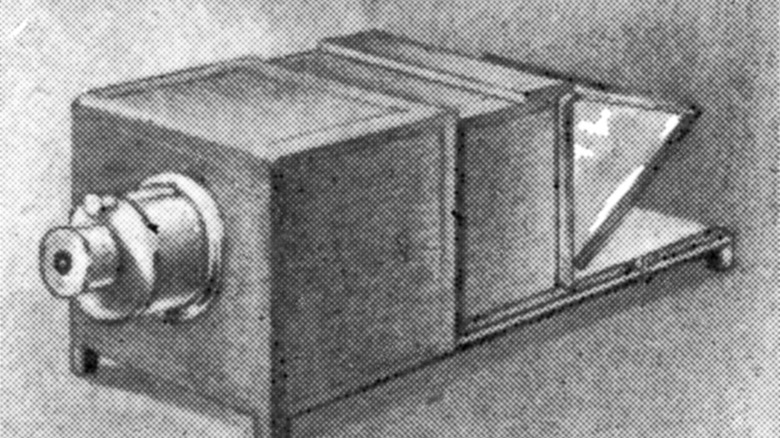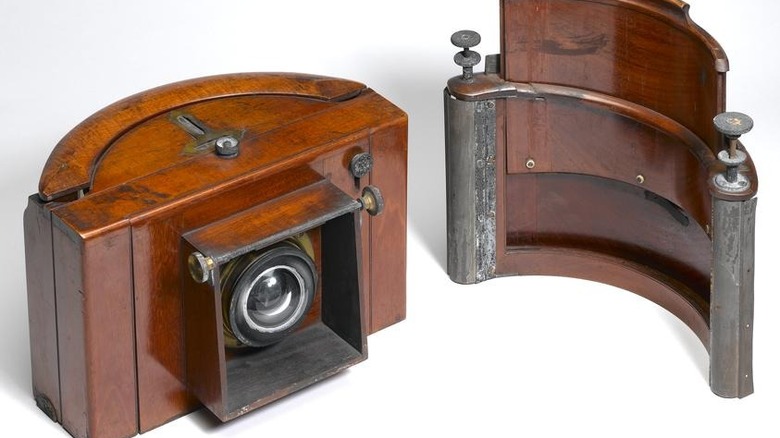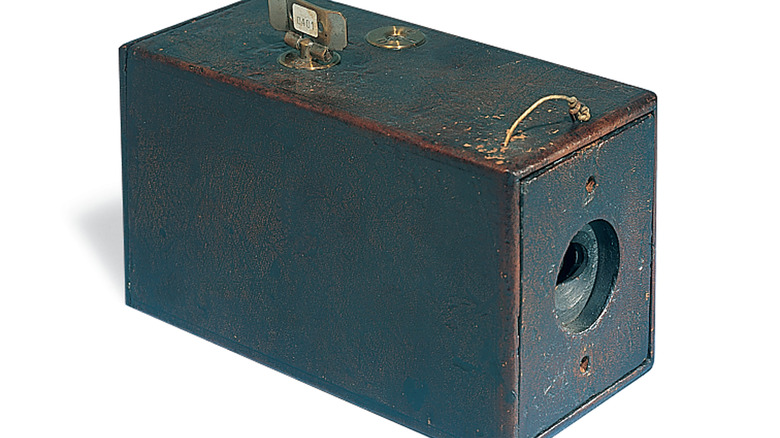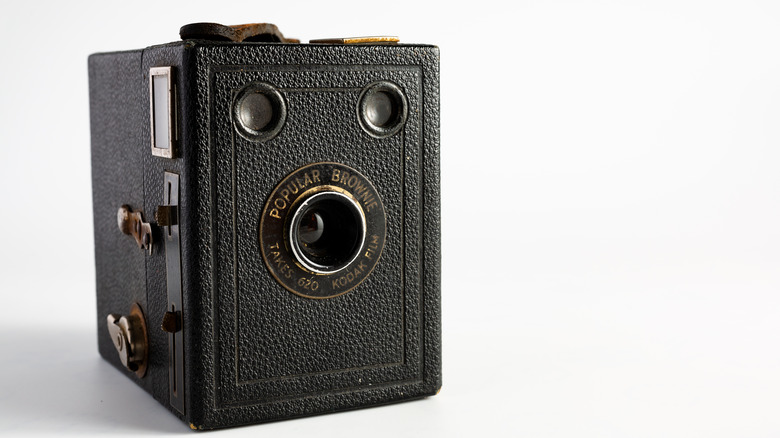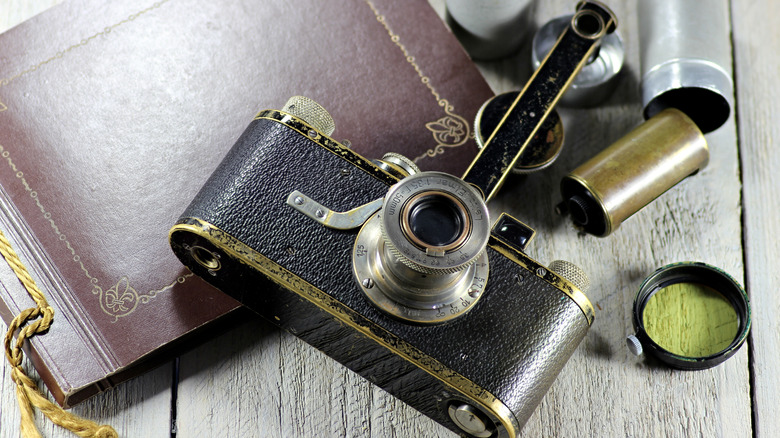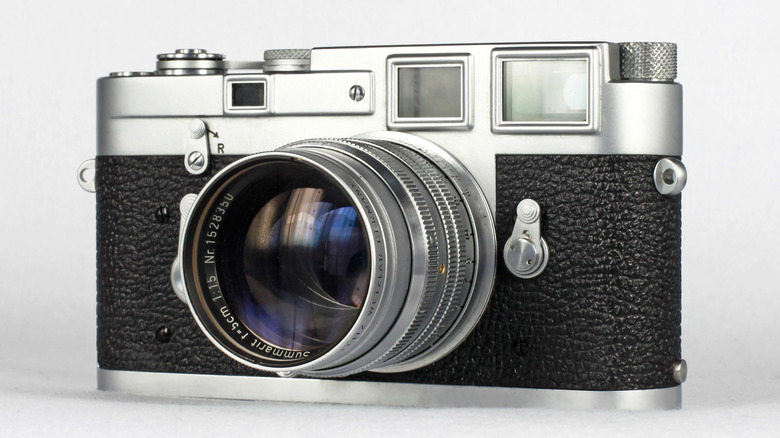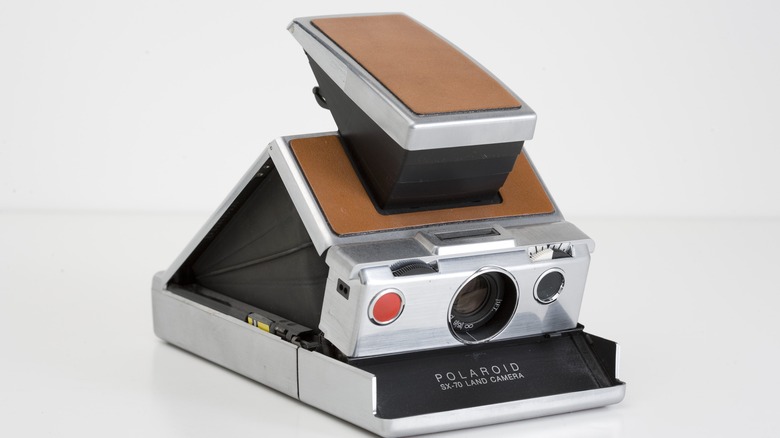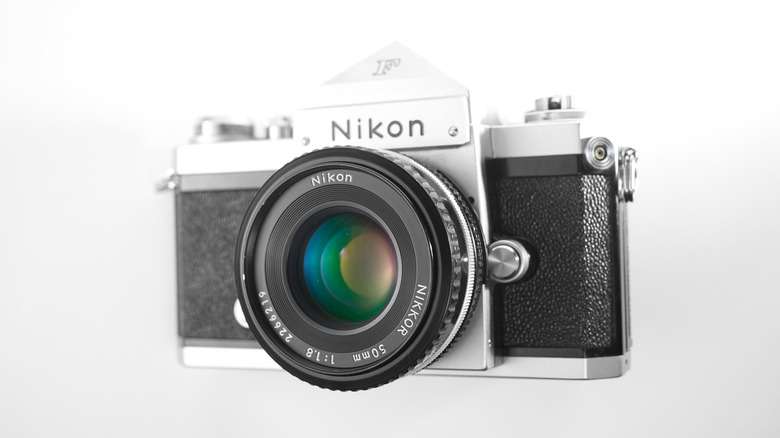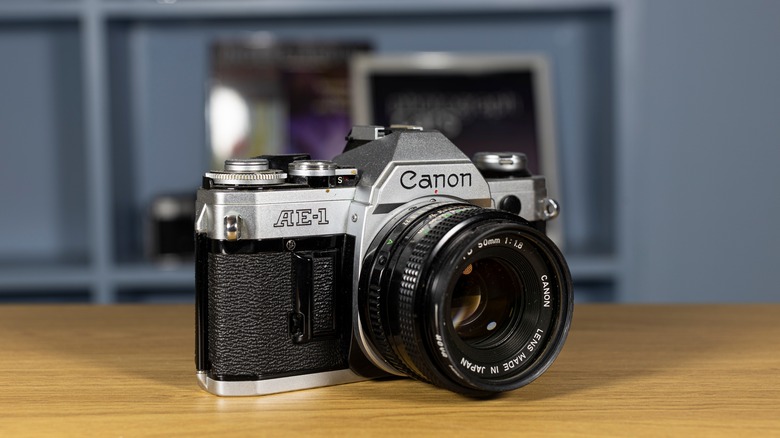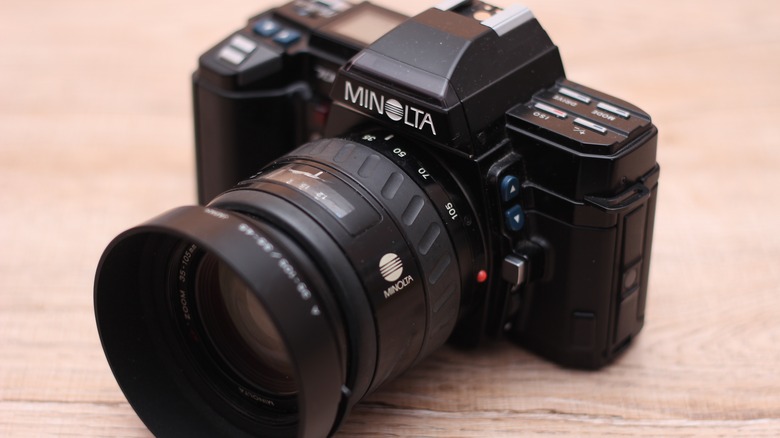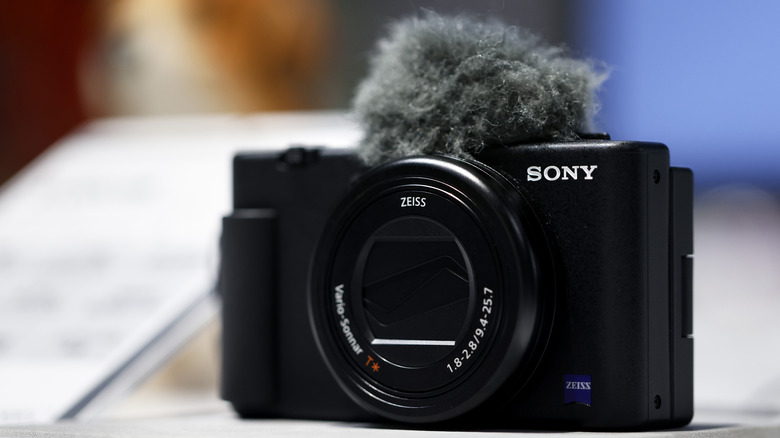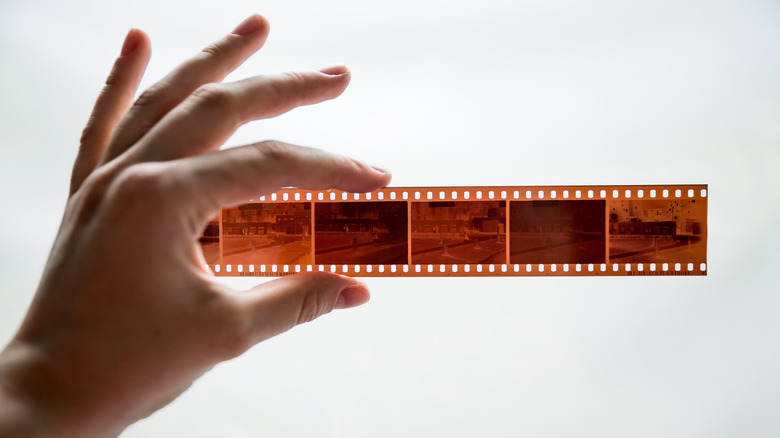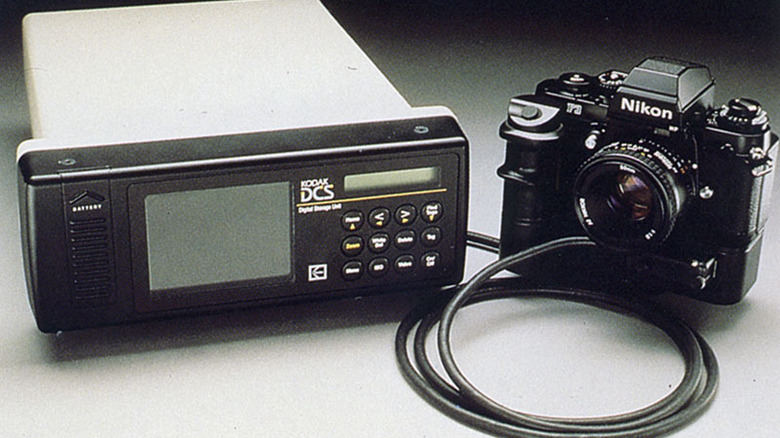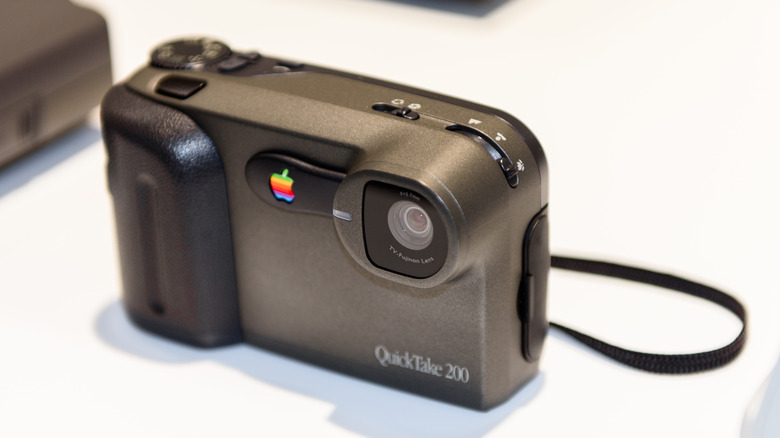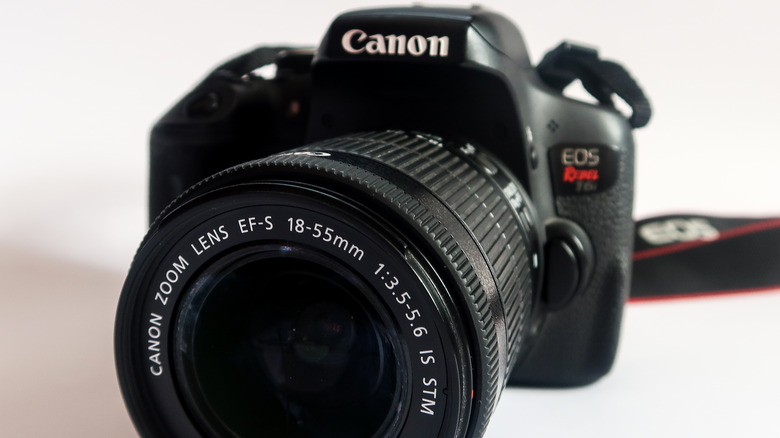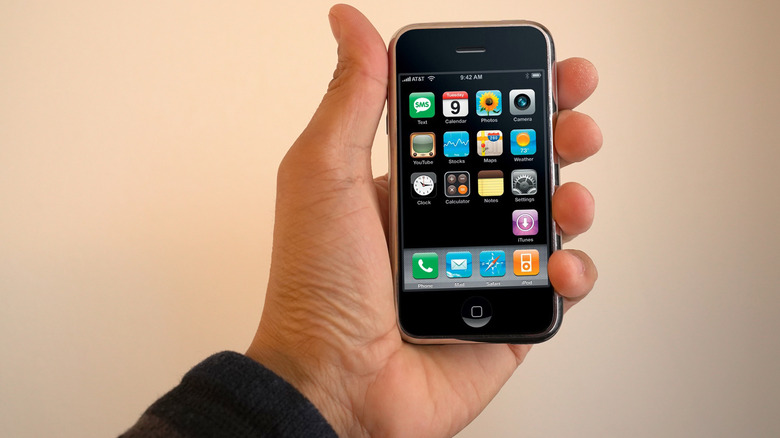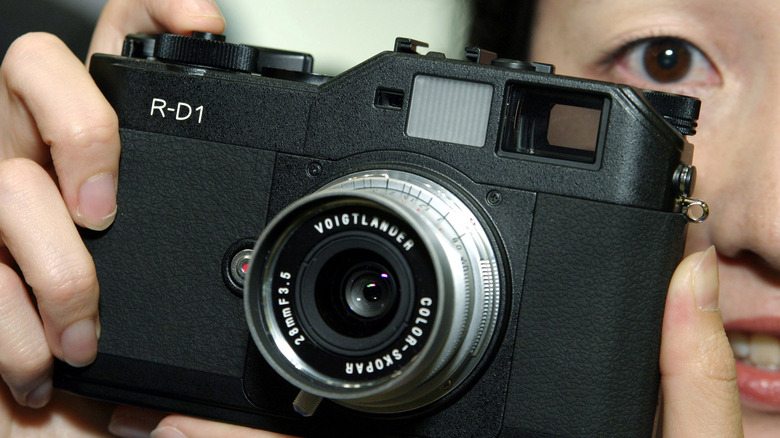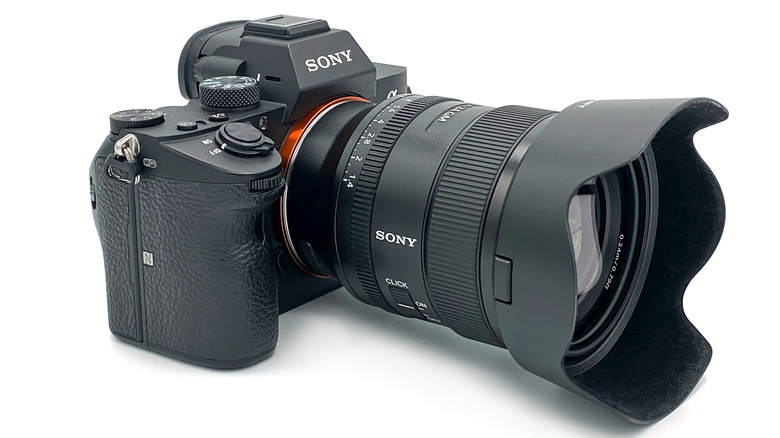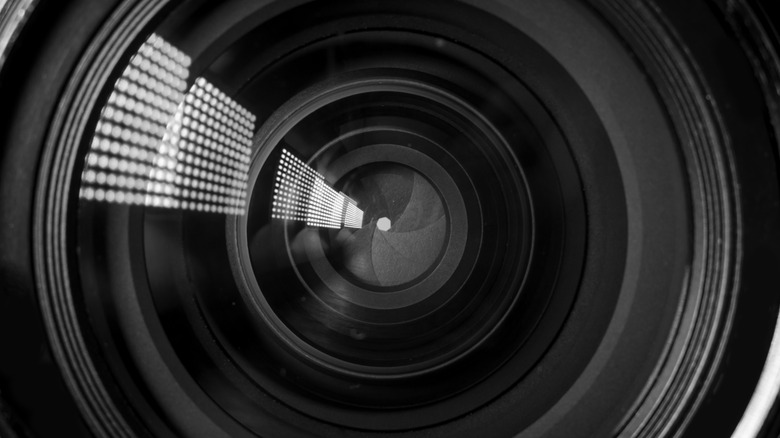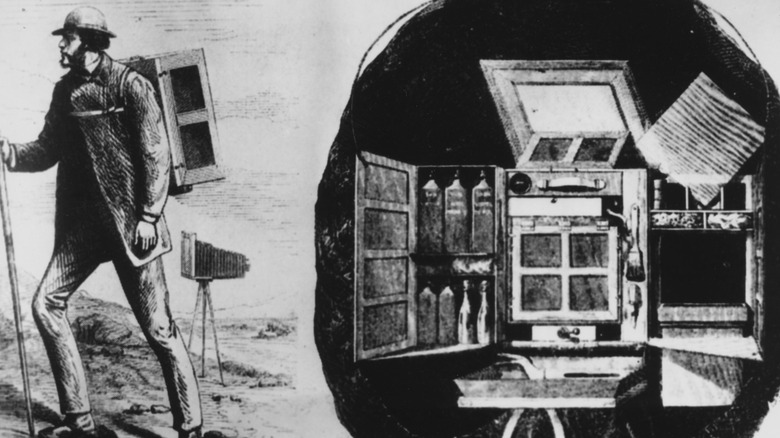Cameras That Changed Photography Forever
We may receive a commission on purchases made from links.
What do the Kodak Brownie, the first low-cost camera, launched in 1900, and a 2022 smartphone have in common? They are both popular photographic tools that best represent the spirit of their respective time. These two devices (small, portable box cameras and smartphones with cameras) also completely changed photography forever. Despite being separated by over 100 years and being polar opposites in terms of design, each contributed immensely to the art and science of photography.
Cameras have certainly come a very long way since the earliest Camera Obscura fascinated people with its "magic" in the days of yore. There was no way to capture and preserve images 2,500 years ago, yet people were just as fascinated with "projected" images as we are today.
Let's take a look at some of the milestones and the ground-breaking technology which helped us to capture images for personal use and even to change the world.
The first camera: Fourth century B.C.
The history of the cameras we know today begins even before the introduction of photography. In the fourth century B.C., the "camera obscura" was conceptualized and used in Greece and China (via Tech Talk).
This was nothing more than a simple, yet ingenious, box (or entire "room" at that time) to capture the light entering through a small hole in the front, in order to project an inverted image of real-life scenes with the collected light onto a wall opposite the opening. As you can probably imagine, this new technology caused quite a stir and the experience of seeing these images enjoyed popularity for hundreds of years.
Naturally, time passed and these "devices" became slightly more advanced. Yet despite them getting smaller and more portable, in the 1550s there was still no way to actually record these projected images, however. Eventually, in the late 17th century, portable camera obscura devices in tents and increasingly smaller, more portable boxes came along and were used mainly as drawing aides.
In the 1800s, a process for "recording," or rather burning images onto photo-sensitive material, was developed in France, and Nicéphore Niépce was the first person to ever take a photo. Later, with a more refined process, the first person was photographically recorded by Louis Daguerre, an associate of Niépce. Their combined research essentially gave us the "daguerreotype" process and camera, setting the stage for the art and science of photography (via Napoleon.org).
The daguerreotype: 1833
1833 was the year that changed photography forever. Using a sheet of copper, plated with silver, and treated with iodine vapor, Louis Daguerre was able to permanently capture an image. He called his invention daguerreotype. It took a few more years of trial and error to become a viable process, but eventually, this revolutionary advancement that actually captured images became publicly available in 1839.
Meanwhile, in Britain, inventor William Henry Fox Talbot came up with the calotype process, which enabled the recording of photos on paper. Using a photographic negative, Talbot's invention allowed multiple prints to be made of the same shot, something that was inconceivable to the general public prior to his research and development.
These two processes were truly groundbreaking for their time. Combined, they laid the groundwork for the art and business of photography, which they essentially created. What's more, the two inventions were unveiled only a few weeks apart from one another.
The first film camera: 1859
Now that the first step in capturing images had been made, camera technology evolved rather quickly in the ensuing years. In 1859, Thomas Sutton received a patent for the first-ever panoramic camera. It was built using a wide-angle lens consisting of a water-filled glass sphere, which would project an image onto a long, curved plate, as depicted in the above photo. This was a significant development over the daguerreotype shot. In fact, Historic Camera notes, Sutton was encouraged to pursue photography after posing for a daguerreotype portrait.
Being the first viable landscape camera, this marked a turning point for photography, enabling further research and later inventions and progress to eliminate distortion from most lenses at the time. This invention also allowed photographers to take photos of wider frames and more than just a person or whatever object was directly placed front and center of the camera.
The Kodak by George Eastman: 1888
Most people know the name Kodak, but few know the actual story of how important this name was for the camera world. While previous imaging inventions were quite significant in their own right, the most significant event in the history of amateur photography was the introduction of the Kodak #1 Camera in 1888. Invented and marketed by George Eastman (1854–1932), a former bank clerk from Rochester, New York, the Kodak was a simple box camera that came loaded with a 100-exposure roll of film. Why was this camera so vitally important? As Leonardo da Vinci once remarked:
"Simplicity is the ultimate sophistication."
It was exactly this simplicity that greatly accelerated the growth of amateur photography — especially among women, to whom much of the Kodak advertising was addressed (via Collector's Weekly).
This simple box with pre-loaded film truly revolutionized the art of photography by using a very simple concept. When used up, the entire camera could be sent to the Kodak factory, after which it would be returned loaded with fresh film along with the negatives and mounted prints, for a cost of $10. It was advertised with the slogan "You Press the Button, We Do the Rest," according to the National Museum of American History.
This simple formula would give us a true milestone in the photography world just a few years later.
The Kodak Brownie: 1900
Hailed as the most important cardboard box ever, the Brownie was a smashing success for Kodak. It didn't look very exciting or sophisticated, but the Brownie completely changed the game due to its size and ease of use. Before it was released, cameras were rather unwieldy and cumbersome, but that was no longer an issue with the Brownie. Because of its (at the time) diminutive size, cheap price, ease of use, and availability, it became the first commercially available camera with mass appeal. Due to the combination of these factors, some have called it the most important camera ever made. The size alone was not the only defining feature, however. For this camera, the film could be taken out after shooting, and developed via a Kodak stockist, at the chemist's, or even at home.
Kodak sold the camera for the princely sum of $1. Users could buy the camera, a set of film, and have that film processed for just $2.
Photography had suddenly become not only portable but extremely affordable as well. Photography for the masses was born.
A $1 camera capable of producing reasonable results was innovative, and this coupled with Kodak's ability to provide directly, or through an enormous number of chemists and photographic retailers, a developing and printing service. This meant that photography became accessible irrespective of social class or photographic skills. A true landmark in the photography world.
The Leica I: 1925
At the 1925 Leipzig Spring Fair in Germany, the world first saw the camera so revolutionary that it continues to influence all modern cameras today in one form or another (via Global Blue). While the Leica 1 was not the first 35mm camera in existence at the time, it certainly was the one to popularize the 35mm standard — leading it to become the most popular film format in the world, and the gold standard by which most subsequent cameras were built and judged.
When Oskar Barnack joined Leitz in 1911 and came up with this concept device to test film frames for movies, he never imagined that it would completely change the art of photography. Originally built as nothing more than a testing device for 35mm film, the happy accident eventually created a camera format that was way ahead of its time, when glass plates were still used and those cameras which actually took film rolls were rather huge by today's standards.
A few years later, in 1930, a new version of the original Leica 1 was launched, which introduced interchangeable screw-fit lenses, which would eventually lead to standardized lens mounts and interchangeable lenses between various camera bodies.
The Leica 1 was followed by the Leica II, which introduced a built-in rangefinder. This camera sparked a copy-craze around the world including imitations from Russia to Japan. This became a gold standard around the world, which led to more innovation — particularly in accessories for the camera.
The Leica M3: 1954
Just the name "Leica M3" alone can make photographers' hearts beat just a bit faster. This beautifully designed masterpiece introduced many new and vital features. First, gone was the screw-mount and instead, it was replaced by the more streamlined bayonet mount for much faster lens changes. Next, the M3 had a rangefinder with a longer base for greater accuracy, and a larger and more usable viewfinder to boot.
A rapid film-advance mechanism, and offering perfect flash synchronization were the final components making this camera a marriage of engineering sophistication and elegant beauty. Hailed as the world's most advanced camera at the time, the M3 was (and still is for collectors) one of the most popular cameras on the market, a common staple especially for photojournalists and various other types of professional photographers. The M3, in the right hands, gave us some of the most world-changing photos in history. Some still consider this the best camera ever made.
Living in the Polaroid moment: 1948
The Land Camera allowed Polaroid to enter the photography arena in 1948 (via ACS). Let's step back a few years and look at a very different approach to photography by Polaroid. When we think of self-developing film, we immediately think of Polaroid, right? It's almost magic to see the picture slide out of the camera and especially to see the image materialize right in front of your eyes.
One of the most important cameras in this regard — one which became a pop-culture icon — was the iconic Polaroid Land Camera. No, "Land" does not mean it's only for landscapes. Quite the opposite, in fact. This milestone gadget was a staple at many indoor parties and events at the time. The name actually comes from its inventor, Edwin Land — the man who came up with the instant photography system.
While the first Land Camera was a big success, it was actually its successor, the Polaroid SX-70, which became the next huge milestone in photography. There was something truly futuristic about this iconic camera. From the functional design, the portability, the futuristic looks, to the aforementioned "magic" moment when the image materialized in front of your eyes, pop culture would not be the same without the Polaroid SX-70.
The Nikon F: 1959
Taking some obvious design cues from the popular Leica M3, Nikon's first SLR (Single Lens Reflex) camera came on the scene in April 1959 and was hailed as the most advanced camera of its day. Many of the individual concepts had already been introduced in other cameras at the time, but the Nikon F was the first camera to combine them all in one do-it-all photographic machine — a much-needed fresh wind of change in the photography world.
It became so popular, in fact, that it dethroned the Leica M3 as the undisputed King of Cameras at the time — and thus chiseled Nikon's name into the collective subconscious of photographers and camera technology enthusiasts. Introduced with a comprehensive range of high-quality lenses and accessories, it was a tough-as-nails SLR system and became widely adopted by professional photographers, especially photojournalists covering the Vietnam War and NASA astronauts.
Some noteworthy features include interchangeable prisms and focusing screens, a depth-of-field preview button, and the ability to lock up the mirror for very long exposures as well as for cleaning. The camera also featured a large bayonet mount (the Nikon F-mount still in use today), a single-stroke ratcheted film advance lever, a titanium-foil focal plane shutter, and a removable back.
Given the built-in quality and thus resilience to damage and/or mechanical failure, it aptly earned the nickname "the hockey puck" for being so well-built that it will outlive the photographer holding it.
Canon AE 1: 1976
Hailing the beginning of the electronic age for cameras, the Canon AE-1 was the first truly affordable camera with autoexposure and the first mainstream camera equipped with a microprocessor. It was a huge success for Canon, selling over 5.7 million units worldwide, making it one of the biggest success stories in the SLR market.
The AE-1 also started a complete overhaul of Canon's SLR line. It helped to bring about a shift from heavy, all-metal-based cameras to more compact bodies with integrated electronics. Extensive use of electronics also allowed a simpler modular internal construction, instead of mechanical linkages. This modular construction, in turn, allowed the use of automated production lines in order to reduce costs further.
In plain terms, this camera became the landmark for Canon to help it compete against rival Nikon, which held market dominance at the time. It was never designed to be a professional camera, but due to its cost-cutting production and modern electronics such as the automatic aperture feature, it allowed relative newcomers to get into the art of photography with a much-reduced learning curve.
Minolta Maxxum 7000: 1985
Already a household name in the photography world at the time, Konika-Minolta hit a home run with the Maxxum 7000.
The world's first fully-integrated autofocus SLR with the autofocus system built into the body, the Maxxum 7000 created a sensation when it was announced, and was a phenomenal sales success. This catapulted the brand to the forefront of the photography arena alongside Kodak and Canon.
A full-featured 35mm SLR, it used a passive AF system and autofocus motor coupled to the focusing mounts in its AF lenses. The main notable feature here was that it focused fairly quickly, representing a considerable advance over previous AF systems. It couldn't hold a candle to today's DSLRs, but it was a true trailblazer in 1985.
Just as a quick side-note here, the influence of the Maxxum line is still present in the industry today, as it provided the mechanical basis and lens mount for today's Sony Alpha DSLRs.
Into the digital realm
Before we get to the actual cameras, let's take a tiny step back to the 1960s, when the concept for today's digital cameras was born. Why? Because the 60s were far out, man. As a matter of fact, they were so far out that an engineer at the NASA Jet Propulsion Laboratory had the crazy idea to use a mosaic photosensor to capture digital images of the planets and stars from orbit.
The technology was nowhere ready at that time, however. But the idea of sensor-based digital photography was born and as research and technology progressed, this would eventually lead to the development of the now-standard CMOS sensor. So, we owe this amazing ability to digitally capture and distribute images of our food, cats, babies, families, selfies, and actual photographic art to a person most of you have never heard of before — Eugene F. Lally.
The end of film
Ironically, it was the company that helped make film photography a reality, that would eventually lead to the abandonment of film altogether — Eastman Kodak.
The first actual digital still camera was developed by Eastman Kodak engineer Steven Sasson in the mid-70s. It was not portable, at nearly four kilograms and being the size of a printer, but it paved the way for all modern digital cameras. Just for comparison's sake, my iPhone 12 features a 12-megapixel camera. Kodak's prototype had a resolution of 0.01 megapixels, taking roughly about 23 seconds to snap the first digital photograph. Knowing that, we should think twice before complaining about shutter lag on our ultra-modern phones.
Digital Sensor technology — all made possible due to the Charged-Couple-Device (CCD) invented in 1969 — went through many iterations until it became viable enough to use in handheld cameras.
The first genuinely handheld digital camera should have been the Fuji DS-1P in 1988. It recorded images as computerized files on a 16MB SRAM internal memory card jointly developed with Toshiba, but the DS-1P never actually made it to shops.
Kodak DCS 100: 1991
The first-ever digital SLR created was the Kodak DCS 100. Using a modified Nikon F3 body, it featured a 1.3-megapixel Kodak CCD sensor. There was one, tiny, small little 'gotcha' however. The reason why you've probably never heard of this camera and that not many people actually owned one was the price.
Coming in at a whopping $20,000 or more at the time, and requiring an external data storage unit to be worn on a shoulder strap and connected via cable, it was neither practical nor realistic enough to break into the mainstream. It was the rare professional photographer and the ultra-wealthy that had the opportunity to test the limits of this camera. But unlike its predecessor, the Kodak DCS 100 at least made it to the point of sale.
The camera that actually brought this technology to the general public came from a very unlikely contender, that became a household name shortly thereafter.
Apple QuickTake: 1994
Though it's apparently quite fashionable to hate on Apple these days, we actually owe much of our modern creature comforts to this iconic company and its gadgets. The first one making the list here is also the first mainstream digital camera that cost under $1,000 (via CNET). This camera ditched the need to lug around a data processor, and its compact design made the camera fit comfortably into a backpack or even a coat pocket.
Designed by Kodak and manufactured in Japan, the Apple QuickTake featured VGA resolution, a fixed 50mm-equivalent F2 lens, an optical viewfinder, and an LCD display. Though not well-known today, the QuickTake helped to pave the way for digital point-and-shoot cameras. Apple brought digital cameras into the mainstream consciousness, despite the fact that the company is not known for such a feat. It could be said that its innovation with the QuickTake was a precursor to Apple's success down the line with the iPhone.
Canon EOS Digital Rebel: 2003
Oh yes, the Canon Digital Rebel. I remember seeing this camera everywhere in the early 2000s. Pretty much everyone I knew at the time who wanted to get into photography had one of these cameras.
Prior to the Rebel, DSLRs were thought to be only for professionals, or (fairly) rich people who always want to have the latest and greatest gadgets.
The Digital Rebel was the torch, so to speak, to light the way for the march of DSLR cameras into the mass-market arena. It featured a six-megapixel CMOS sensor, an LCD control panel, a TFT color LCD, and pushbutton controls on the back (via CNET). It was the camera to redefine DSLRs and light the way into a fresh, new direction in digital photography — one that became much more inclusive for regular people.
Speaking of lighting the way, 2007 saw the drop of a landmark gadget that changed not only the course of photography but of modern communication.
The iPhone: 2007
It didn't have the best camera, it wasn't the absolute feature-rich phone on the market at that time, but despite that, it was a trend-setter and a world-changer in many ways. We still feel the ripple effects of that first iPhone in our lives today. It completely changed the world and brought about so many changes in photography.
A famous photographer, Chase Jarvis, once said, "The best camera is the one you have with you."
This statement holds very much true today. The iPhone made it true for everyone that bought one. A camera that is always in your pocket and ready to shoot instantly, and an absolute game-changer. It's actually quite amazing that a smartphone with a simple two-megapixel camera could essentially ring the death-knell for the point-and-shoot camera market, but it's hard to argue that digital photography was not completely transformed by this little gadget.
The first iPhone certainly couldn't hold a candle to any dedicated digital camera at the time. With it, the stage was set for all the wonderful camera advancements we have in our obligatory digital appendages today. Some photography purists still frown upon smartphones as viable cameras, but the impact these devices have had since the unveiling of the original iPhone is undeniable. The tremendous popularity of Instagram, for instance, would not be as prevalent without the era of mobile photography brought on by the iPhone.
Epson R-D1: 2004
DSLRs have always been rather bulky. It seems gadgets always get smaller and more compact, but that just wasn't possible for more advanced cameras due to the mirror array inside. The deciding turning point for cameras to eliminate the bulky mirrors didn't come from a traditional camera manufacturer, however, but rather from a source known for printers – Epson.
In 2004, long before the likes of Canon, Nikon, Panasonic, or Sony had even considered mirrorless cameras as viable options, Epson revealed the R-D1 Digital Rangefinder – the first commercially available digital mirrorless rangefinder-style camera. It certainly wasn't cheap, at around $3,000, but it was a beautiful camera, modeled on Leica M-series aesthetics (via MPB). This proved to both the industry and the buying public that mirrorless cameras could become commonplace for both professional and amateur photographers.
Outside of its mirrorless innovation, the Epson R-D1 was an evolution of what we'd seen previously from Leica. It even used Leica M-mount lenses. $3,000 is certainly not something you would find haphazardly discarded under your pillow somewhere, but in 2004, the R-D1 was one of a kind and provided much inspiration for todays' mirrorless cameras by combining traditional aesthetic nostalgia with modern technology. Its thin frame and compact size have been replicated in most mirrorless cameras ever since.
Sony SLT Alpha 55: 2010
A popular favorite amongst professional photographers and hobbyists alike, the Sony Alpha series of cameras remains wildly popular these days. It's set quite a few innovative trends over the last few years. The grandfather here, the Alpha55, provided an important key step in moving beyond the limitations set by traditional mechanical and optical systems.
This incredible feat of technology was one of the first cameras to replace the traditional mirror with a translucent mirror, which enabled phase-detection autofocus in live-view, and got rid of the optical viewfinder completely, replacing it with an electronic viewfinder. These, along with other changes under the hood, allowed multiple operations to be performed simultaneously, rather than sequentially — greatly increasing burst-speed to 10 frames per second, and being able to capture 1080p movies at 30 or even 60 frames per second in a DSLR. This too was quite a disruptive technological advancement and would yield a whole new generation of cameras.
Looking towards the future
Phew — that was a lot of information to get through. You may not have realized there were so many groundbreaking cameras in the history of photography. Looking back at all of these marvels of technology, it is absolutely incredible to see how far we've come, and at the changes each of these cameras brought to the realm of photography — leading us to where we are today with all of this acquired knowledge and technology at our fingertips.
No one knows what the future holds, but It will be just as exciting to see where we go from here and what technological changes will come in how we preserve important moments (of our food, cats, family, best friends, loved ones, the trips we take, or the things we have) going forward.
What do you think will be the next big step in imaging technology? Cameras in eyeglasses? Holographic storage? Perhaps photographic contact lenses? One thing is for sure, the next influential advancement is just around the corner.
Addendum: Honorable mentions
Given there is a 2000+ year history of imaging technology, it's pretty much impossible to cover every influential or ground-breaking camera in this article, and some readers might feel their favourite camera was left out, so I'd like to give a quick nod to some other important cameras which had an influence in the camera world in one way or another. In case you're interested in more influential camera tech, here are some honorable mentions (in no particular order):
- Kodak/AP NC2000: first digital camera for photojournalists
- Ricoh RDC-1: 1995, first digital camera with a movie mode
- Kine Exakta I: 1936
- Kodak Super Six-20: 1938
- Asahi Pentax K1000: 1977
- Sony Mavica: 1981
- Canon EOS 5D Mark II: 2008
- Panasonic Lumix G1: 2008, first Micro Four Thirds camera
- Sony NEX series: first affordable "ultra-compact" DSLR
- Fujifilm X-T1: brought Fuji back from obscurity and became an absolute favorite amongst camera enthusiasts.
- Hasselblad 1600F: 1948
- Your own choice I might have left out
